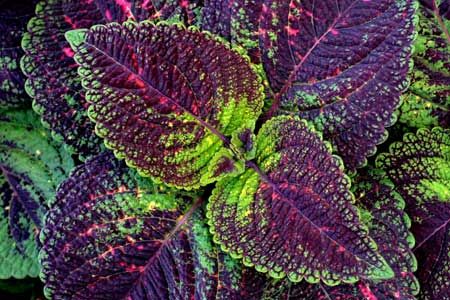Most people think about flowers when it comes to adding color to your garden, but that’s not your only option. Some plants have colorful leaves that can add vibrancy to your garden year-round.
“People often don’t realize that foliage plants present a kaleidoscope of color possibilities, from gold and chartreuse to blue-green, red, burgundy, purple, and nearly black,” says gardening expert Nancy J. Ondra, author of Foliage: Astonishing Color and Texture Beyond Flowers.
This guide includes recommendations for the best foliage plants for your garden, along with tips on keeping them lush and colorful all year. By incorporating a few of them, you can create a low-maintenance landscape that’s visually appealing and easy to care for.
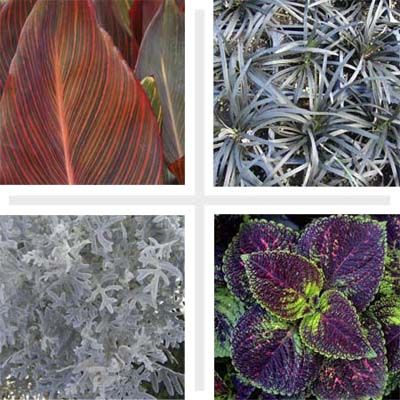
The Best Perennials for Your Foliage Garden
To create a stunning foliage garden, start by selecting the right plants. Here are nine perennials that thrive across various regions, offering a range of colors, shapes, and textures to build a solid garden foundation. These plants offer year-round color and are easy to maintain, making them ideal for beginners and experienced gardeners.
Canna (Canna x generalis)
Cannas add a dramatic focal point to your garden with their towering height and vivid foliage. Though often grown for their flowers, they can also be selected for their striking tropical-looking leaves, which range from nearly black to green striped with gold. Cultivars like Phasion and Durban feature purple leaves with orange streaks.
These plants thrive in full sun, reach heights of 4 to 6 feet, and are hardy to 5 degrees Fahrenheit if their roots are well mulched during winter. Their lush leaves create a tropical ambiance and pair well with other brightly colored foliage plants for an exotic look.
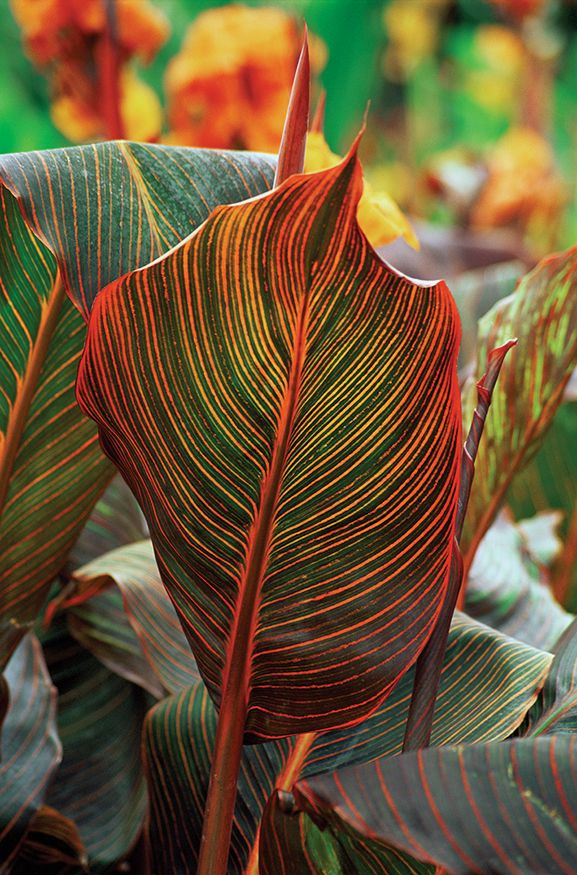
Pipsqueak (Bergenia)
Pigsqueak is a tough and adaptable option for shady spots in your garden. It features ground-hugging rosettes of large, paddle-shaped glossy-green leaves, producing pink flowers in spring and sometimes in fall. The foliage lasts through winter except in the coldest climates. Regularly cutting back or dividing the plants helps prevent legginess.
Growing 12 to 18 inches tall and hardy to -40 degrees Fahrenheit, pipsqueak adds rich texture and seasonal interest, making it a versatile addition to any planting scheme.
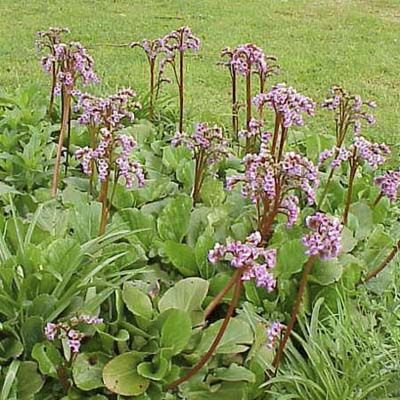
Black Mondo Grass (Ophiopogon planiscapus)
Black mondo grass, a type of lily with inky black, grass-like leaves, thrives in partial to full shade and grows 6 to 12 inches tall. Hardy to -10 degrees Fahrenheit, it creates a striking contrast when paired with the dark green leaves of standard mondo grass (O. japonicus) or lighter-colored foliage.
This dramatic plant works well along borders or in container arrangements, adding visual interest to your garden. Its dark, slender leaves enhance any planting scheme, offering texture and color contrast.
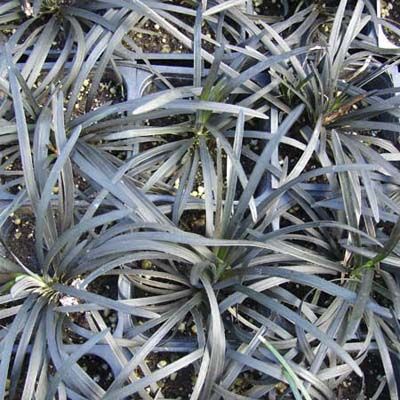
Plantain Lily (Hosta)
Hostas are versatile shade plants that form mounds of showy leaves in various shapes like hearts, lances, ovals, and circles, with textures ranging from smooth to crinkled and glossy to matte. The foliage comes in shades of green, yellow, and gray-blue, often with variegation, and they grow to 15 to 36 inches tall. Hardy to -40 degrees Fahrenheit, hostas thrive in partial shade and are ideal for filling in shaded areas and providing lush ground cover.
Mixing different varieties adds visual depth and interest to your garden. Their diverse leaf shapes, textures, and colors make hostas popular for borders and shaded spaces.
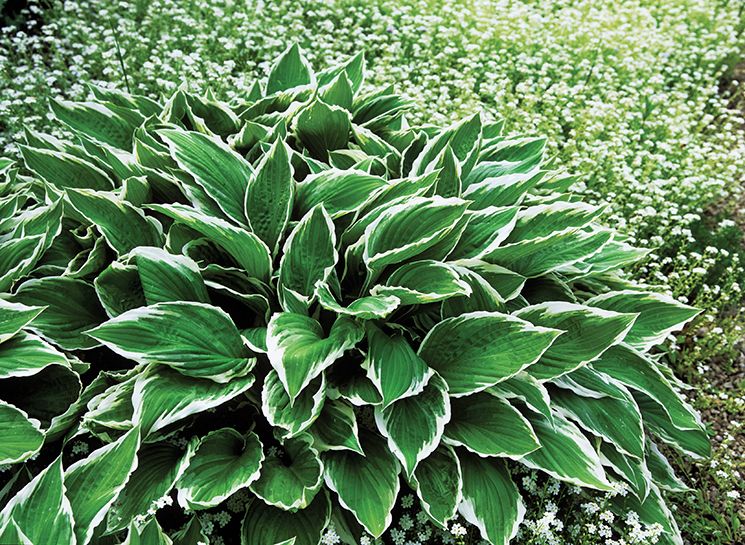
Lambs’ Ears (Stachys byzantina)
Lambs’ ears are known for their soft, velvety gray-green leaves, which add a tactile element and a silvery contrast to green foliage in your garden. They thrive in full sun to partial shade, grow 6 to 12 inches tall, and are hardy to -30 degrees Fahrenheit. They produce insignificant pink flowers in late spring or early summer that attract bees and butterflies. However, these should be clipped to prevent the plant from spreading, as it can be invasive in some areas.
Lambs’ ears are excellent for edging borders and paths, providing texture and visual interest. Their resilience in various soil types makes them a reliable choice for many gardeners.
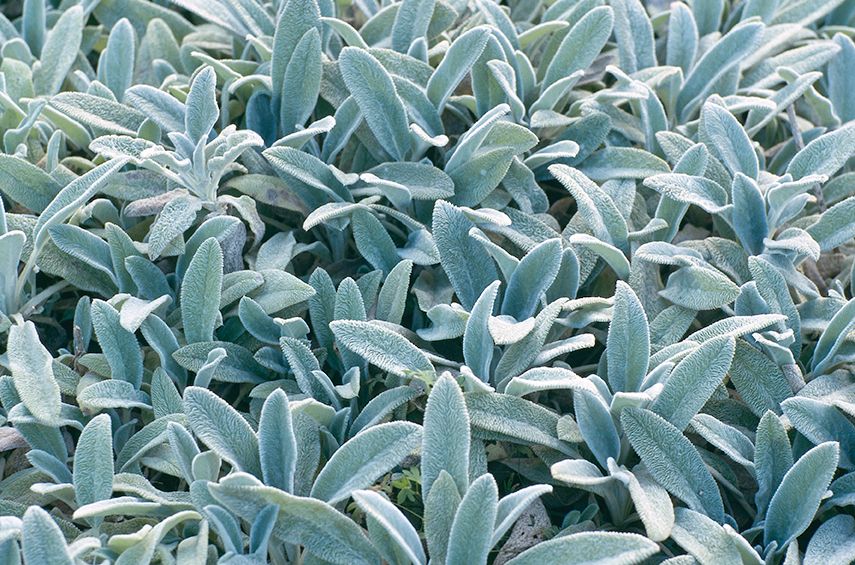
Japanese Painted Fern (Athyrium niponicum)
Japanese painted ferns can bring a touch of elegance to shaded garden areas with their intricate leaf patterns and vibrant colors. Their silver-green leaves, sometimes streaked with purple, retain their silvery color even in the shade, unlike many variegated plants. Growing 12 to 18 inches tall, they thrive in partial to full shade and are hardy to -30 degrees Fahrenheit.
These ferns are also remarkably resilient, tolerating poor soil and windy conditions with ease. Their durability and striking appearance make them an excellent choice for livening up any dull corner.

Dusty Miller (Senecio cineraria)
Dusty Miller adds a silvery touch to your garden with its delicate, fernlike leaves that have a velvety texture. This drought-tolerant plant thrives in full sun, grows 6 to 12 inches tall, and is hardy to 10 degrees Fahrenheit. Clipping the insignificant yellow flowers encourages better leaf growth.
Dusty Miller can be grown annually in colder climates and propagated from cuttings indoors over the winter. Its resilience and ease of propagation make it a practical and economical choice, especially for xeriscaping or dry areas.
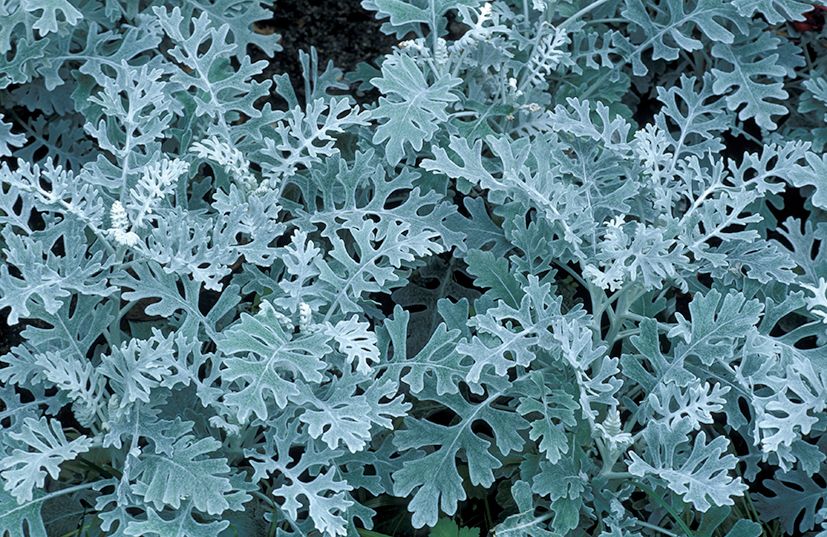
Japanese Forest Grass (Hakonechloa macra)
Japanese forest grass adds a graceful arching form to garden beds with green, gold, or variegated leaves. Clumps are spread by underground runners but are not invasive. The popular variety Aureola grows to about 2 feet tall, with green leaves striped yellow in the sun and chartreuse in the shade.
This grass thrives in sun to partial shade, reaching 14 to 36 inches tall, and is hardy to -25 degrees Fahrenheit. It also makes an attractive ground cover for shaded spots, offering visual interest with its changing hues.
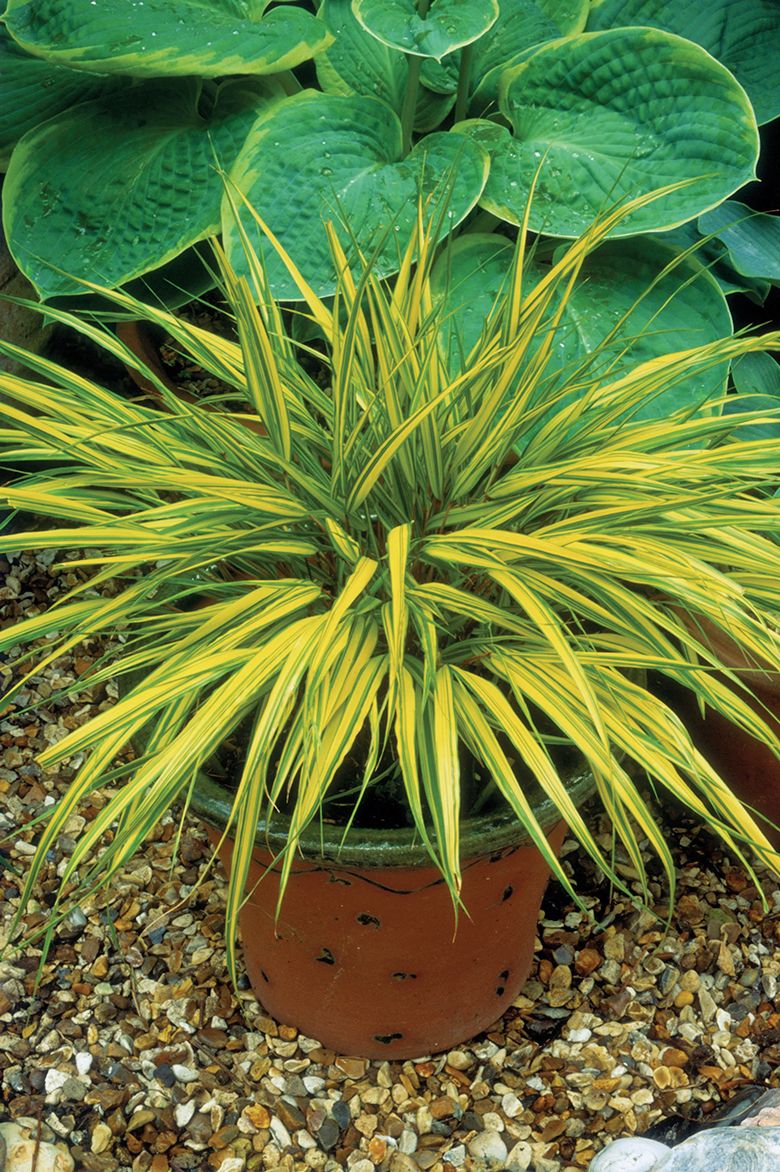
Coral Bells (Heuchera sanguinea)
Coral Bells offer vibrant colors and intricate foliage shapes, with many new varieties featuring frilly or scalloped leaves in bold colors. They are versatile, thriving in both full sun (in cool climates) and partial shade. Make sure they have good drainage to prevent root rot and maintain their vivid colors. The orange H. villosa Caramel variety excels in high humidity and can grow 8 to 24 inches tall. Some varieties are hardy to -40 degrees Fahrenheit, making them a resilient addition to any garden.
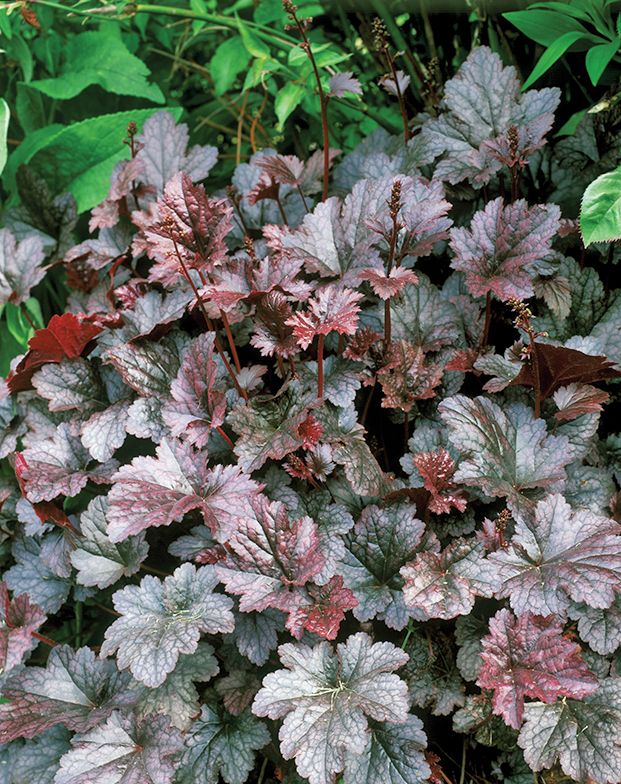
Three Standout Annuals With Colorful Foliage
Perennials provide the foundation for a foliage garden, while annuals allow for versatility in changing the garden’s appearance yearly. The following three annuals exhibit remarkable foliage and can be utilized to fill vacant areas in beds, borders, or containers.
Castor Bean (Ricinus communis)
Castor beans make a dramatic statement in your garden with their tropical-looking, green-to-burgundy lobed leaves, reaching up to 18 inches wide. They grow up to 10 feet tall and can create a striking focal point or serve as a lush backdrop for smaller plants. They thrive in full sun but are not suitable for yards where small children or pets play, as all parts of the plant are poisonous.
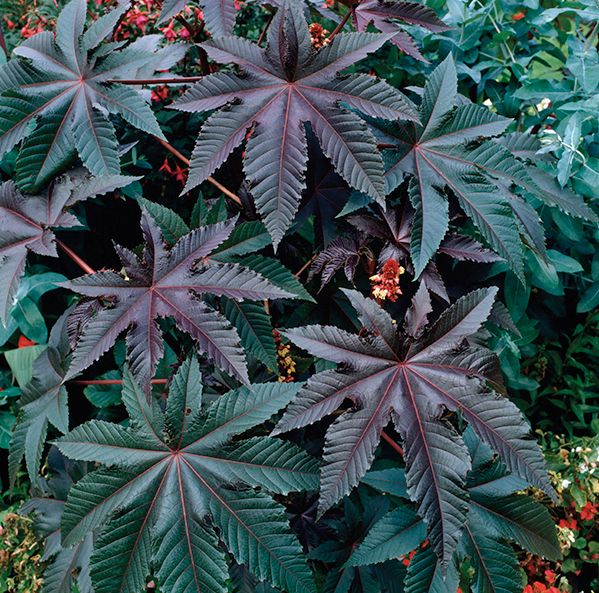
Summer Poinsettia (Amaranthus tricolor)
Summer poinsettias infuse your garden with vivid color. Some varieties feature brilliant red top leaves, while others display yellow or a mix of green and red. They grow 36 to 48 inches tall in full sun and add vertical interest to garden beds with their multicolored foliage. Ideal for brightening up any garden space, they are relatively easy to grow and require minimal care beyond regular watering.
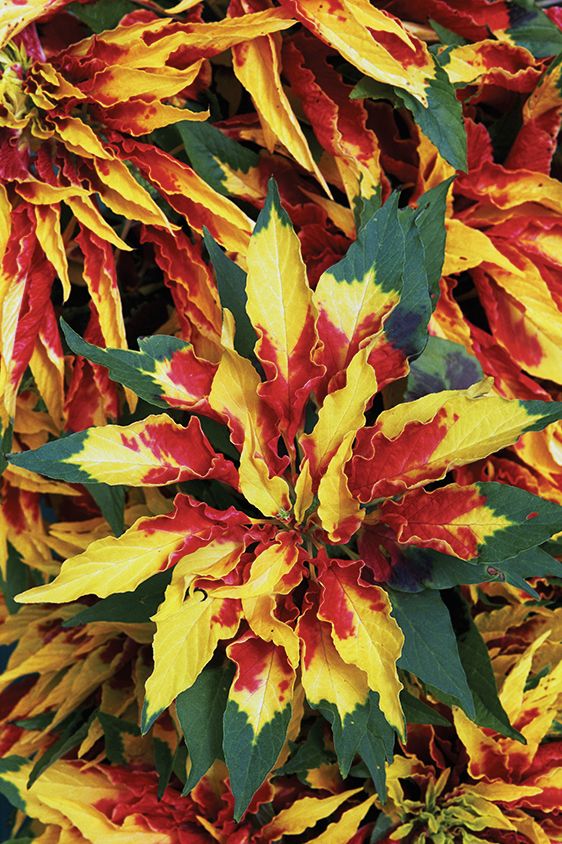
Coleus (Solenostemon scutellarioides)
Coleus plants are valued for their vibrant and varied leaf colors, ranging from yellow to purple. Though often treated as annuals in most parts of the country, they can be grown as tropical perennials. Most varieties prefer partial shade, but some thrive in full sun, reaching heights of 12 to 36 inches. Coleus is versatile and can add pops of color to container gardens, borders, or ground cover.
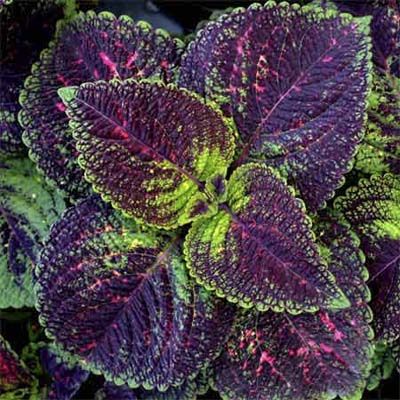
Designing With Colorful Foliage
When planning your layout, account for the mature size of plants. Be mindful of each plant’s growth habit and space needs to avoid overcrowding and maintain the garden’s design integrity. Group plants with similar light and water requirements to simplify maintenance.
You can also mix different leaf shapes and sizes for texture. Combine plants with large, bold leaves with fine, delicate foliage to add layers of visual texture. Use contrasting colors to create visual interest as well. Pair plants with different leaf colors, such as dark purple and bright gold, to make each plant stand out.
Caring for Foliage Plants
To keep your colorful foliage plants looking their best, follow these care guidelines:
- Fertilize regularly with a balanced, slow-release fertilizer to support robust foliage and vibrant coloration throughout the season.
- Monitor for pests and diseases and address issues promptly. Check plants frequently for signs of infestations or disease and take action quickly.
- Prune and shape as needed to maintain the desired form. Trim back any overgrown or damaged foliage to keep plants looking neat and healthy.
- Provide winter protection for less hardy varieties in colder climates by mulching, moving containers to sheltered areas, or bringing houseplants indoors during extreme cold.
- Water consistently, especially during dry spells. Keep soil evenly moist but not waterlogged to prevent stress and promote healthy growth.
